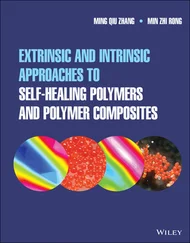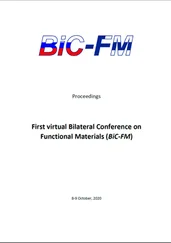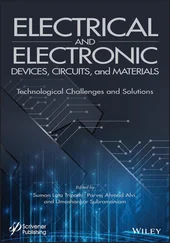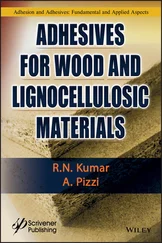Self-Healing Smart Materials
Здесь есть возможность читать онлайн «Self-Healing Smart Materials» — ознакомительный отрывок электронной книги совершенно бесплатно, а после прочтения отрывка купить полную версию. В некоторых случаях можно слушать аудио, скачать через торрент в формате fb2 и присутствует краткое содержание. Жанр: unrecognised, на английском языке. Описание произведения, (предисловие) а так же отзывы посетителей доступны на портале библиотеки ЛибКат.
- Название:Self-Healing Smart Materials
- Автор:
- Жанр:
- Год:неизвестен
- ISBN:нет данных
- Рейтинг книги:4 / 5. Голосов: 1
-
Избранное:Добавить в избранное
- Отзывы:
-
Ваша оценка:
- 80
- 1
- 2
- 3
- 4
- 5
Self-Healing Smart Materials: краткое содержание, описание и аннотация
Предлагаем к чтению аннотацию, описание, краткое содержание или предисловие (зависит от того, что написал сам автор книги «Self-Healing Smart Materials»). Если вы не нашли необходимую информацию о книге — напишите в комментариях, мы постараемся отыскать её.
Self-Healing Smart Materials — читать онлайн ознакомительный отрывок
Ниже представлен текст книги, разбитый по страницам. Система сохранения места последней прочитанной страницы, позволяет с удобством читать онлайн бесплатно книгу «Self-Healing Smart Materials», без необходимости каждый раз заново искать на чём Вы остановились. Поставьте закладку, и сможете в любой момент перейти на страницу, на которой закончили чтение.
Интервал:
Закладка:
Thermosetting polymers constitute one of the two great polymer groups according to the most usual polymers classification. They distinguish themselves from thermoplastic polymers—which form the other group—by their crosslinked structure, which provides them with a set of distinctive properties, such as an improved resistance to solvents and chemical reagents, good mechanical strength and thermal stability [5]. Owed to these properties their use as protective coatings, among other applications, has become very popular. Unfortunately and also because of its crosslinked structure, typical thermosetting polymers cannot be healed. This is their main disadvantage in comparison with thermoplastics, which can be not only healed but also reprocessed and recycled by applying the proper processing that often includes a thermal treatment [6, 7]. These differences, however, are starting to vanish, as proved by the continuously increasing number of systems based on self-healing and recyclable thermosetting polymers appearing in the scientific literature. The relevance of the role that self-healing materials and recyclable thermosets are called to play has been already highlighted by the World Economic Forum, which listed them among the Top 10 Emerging Technologies in 2013 and 2015 respectively [8, 9].
In this chapter, we will describe some of the more recent advances in the field of self-healing thermosetting polymers with potential application as coatings. One of the most popular classification of self-healing thermosets is between extrinsic and intrinsic healing systems [10, 11]. The category of extrinsic self-healing thermosets encompasses all those systems that make use of an external agent to perform the healing of the damage. The self-healing composites with hollow microspheres or microfibers filled with a repairing agent, usually a thermosetting polymer precursor, are the most common examples. The healing mechanism of these materials intends to mimic how nature acts to heal wounds in animals, through a vascular system that delivers the healing agent. The healing process in polymers starts when a crack propagates through it and breaks the vessels that contain the repairing agent, which is released within the crack. At this moment, the repairing agent comes in contact with a catalyst dispersed in the matrix and reacts, forming a new polymeric network that fills the crack, restoring the mechanical properties to the material. To this group belong the first developed self-healable polymers [3, 4, 12, 13]. Figure 1.1 shows schematically the concept of extrinsic self-healing thermosetting polymers.
The other large group is formed by those self-healing polymers that do not require the intervention of an external healing agent. There are some examples of mixtures of thermoplastics and thermosets, either homogeneous or with a multi-phase structure, that use respectively the entanglements of dangling chains or the melted thermoplastic to mend an eventual crack [15, 16]. The majority of the reported intrinsic self-healing thermosets, however, are based on either reversible or dynamic covalent bonds. During healing, such crosslinked polymers are depolymerized or undergo a topological rearrangement, depending on whether the bonds that form the macromolecule are of reversible, or of dynamic nature [17–19]. In both cases, when the healing is produced the same polymer acts as its own healing agent. The disadvantage of most intrinsic self-healing polymers is that they need an external stimulus—such as heat, light or a mechanical stress—to induce the healing. Figure 1.2 shows schemes of the aforementioned intrinsic self-healing thermosets.
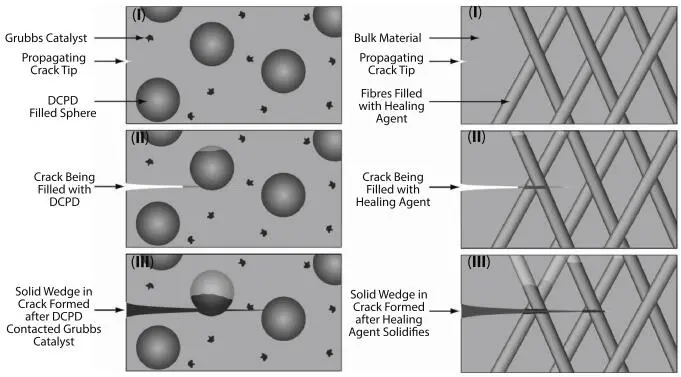
Figure 1.1Concept of healing mechanisms in microcapsule- (left column) and hollow fiber- (right column) based self-healing composites. Extrinsic polymeric composites. Adapted from Ref. [14]; Copyright (2008) with permission from Elsevier.
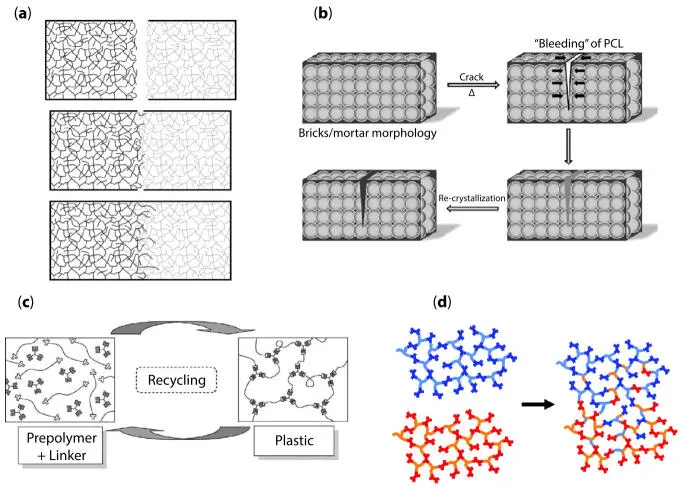
Figure 1.2Intrinsic healing mechanisms for thermosetting polymers. (a) Homogeneous mixtures of thermosetting and thermoplastic polymers. Reprinted with permission from Ref. [14]. Copyright (2008) with permission from Elsevier. (b) Heterogeneous mixtures of thermosetting and thermoplastic polymers. Reprinted with permission from Ref. [15]; Copyright (2009) American Chemical Society. (c) Polymeric networks based on reversible covalent bonds. Reproduced with permission from Ref. [20]. Copyright (2008) John Wiley & Sons, Inc. (d) Polymeric networks based on dynamic covalent bonds. Adapted with permission from Ref. [21]. Copyright (2012) American Chemical Society.
Other characteristics of the self-healing coatings are also of critical relevance for their final applications. Perhaps the most important one regards the stimulus needed for the self-healing process to start, ranging from materials that need no stimulus to the cases where high temperatures or external stresses have to be applied. This would be another valid classification for self-healing materials, but as we will find out, very often the limit between them is somewhat blurred. In most cases extrinsic self-healing polymers are totally or nearly autonomous, and intrinsic ones need an external triggering. That is, most intrinsic self-healing coatings should not be regarded as self-healing, but instead just as healable materials. There are as well some notable exceptions to this statement that deserve to be considered.
Extrinsic self-healing polymers were developed several years before that intrinsic ones. However, nowadays intrinsic self-healing polymers are a much faster growing research field, led by polymeric networks based on dynamic covalent bonds (DCBs). We will devote the first part of this chapter to extrinsic self-healing thermosets, and a second part to intrinsic ones, with special emphasis on polymeric networks with DCBs. Finally, we will provide a perspective for future trends regarding self-healing polymeric coatings.
1.2 Extrinsic Self-Healing Polymer Coatings
The most widely explored extrinsic self-healing polymers are systems based on composites containing the healing agent into purposely designed containers that break when the material is damaged. Usually, their self-healing is autonomous, needing no other driving force than the damage itself, or in some cases the action of the surrounding environment. The key for the self-healing to take place autonomously is that the chemical precursors released can readily react at the material’s operation temperature. Quite often this is room temperature, and hence these polymeric composites must be designed in order to carry the appropriate amount of catalyst to complete the curing reaction at this low temperature. Besides this, other relevant aspects of the healing mechanism need to be accounted to achieve high healing efficiencies. The vessels containing the healing agents must break, and the healing agents have to flow to fill the crack before the curing reaction produce its gelation. Hence, a good load transfer from the matrix to the vessels combined with the specific fracture toughness of the vessels is needed, and the viscosity of the healing agents must be low enough to allow them to flow into the crack. These features have also been addressed in several previous works [22].
There are several monomers and catalysts that allow reaction rates high enough to achieve self-healing at room temperature. Grubbs catalysts are one of the most widely used for autonomous self-healing composites based on microencapsulated healing agents. It was first proposed for self-healing composites by White et al. , to aid the crosslinking of dicyclopentadiene (DCPD) through a ring opening metathesis polymerization (ROMP) [12]. The DCPD was contained into urea microcapsules embedded within these composites, and the Grubbs catalyst was dispersed in the matrix. After healing during 48 h at room temperature, the researchers observed that the healed sample reached a load of 75% of that of the virgin sample in a fracture test. These results were very promising, and the healing efficiency values were quickly surpassed in the following years by similar systems that incorporated some improvements in their formulations and/or their processing [23, 24]. By protecting the catalyst with wax [25] a considerable raise in the healing efficiency was achieved, thanks to an enhanced stability of the catalyst, but this modification was also associated with a decrease in the damage resistance to impact. These systems were also used to study the effect of the particles’ size and load on the healing efficiency, which allowed to determine that microcapsules smaller than 30 mm are efficient for small cracks (around 3 mm), but larger capsules and higher loads are needed for larger cracks [26].
Читать дальшеИнтервал:
Закладка:
Похожие книги на «Self-Healing Smart Materials»
Представляем Вашему вниманию похожие книги на «Self-Healing Smart Materials» списком для выбора. Мы отобрали схожую по названию и смыслу литературу в надежде предоставить читателям больше вариантов отыскать новые, интересные, ещё непрочитанные произведения.
Обсуждение, отзывы о книге «Self-Healing Smart Materials» и просто собственные мнения читателей. Оставьте ваши комментарии, напишите, что Вы думаете о произведении, его смысле или главных героях. Укажите что конкретно понравилось, а что нет, и почему Вы так считаете.


